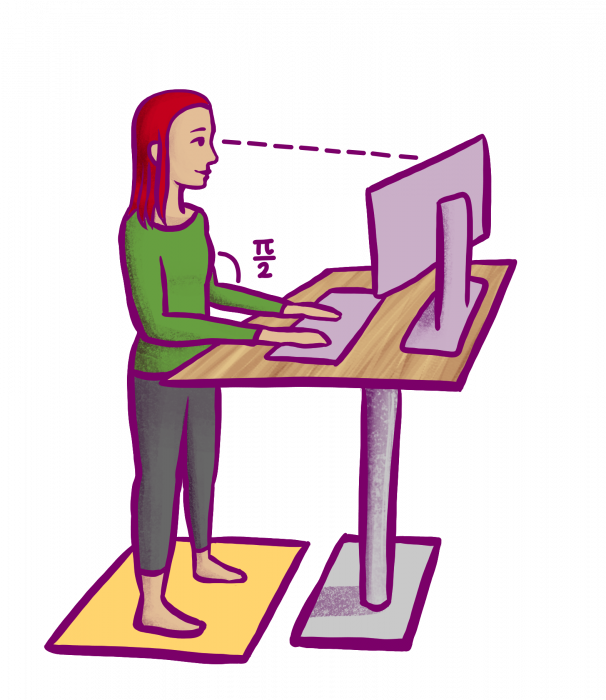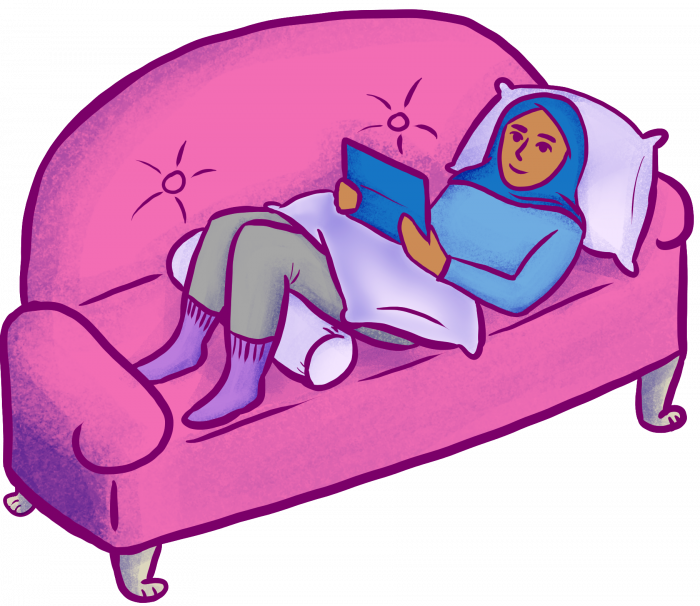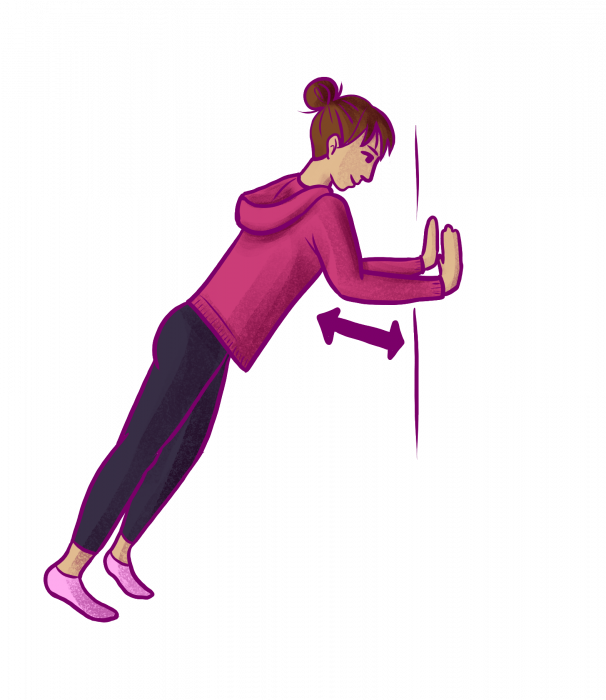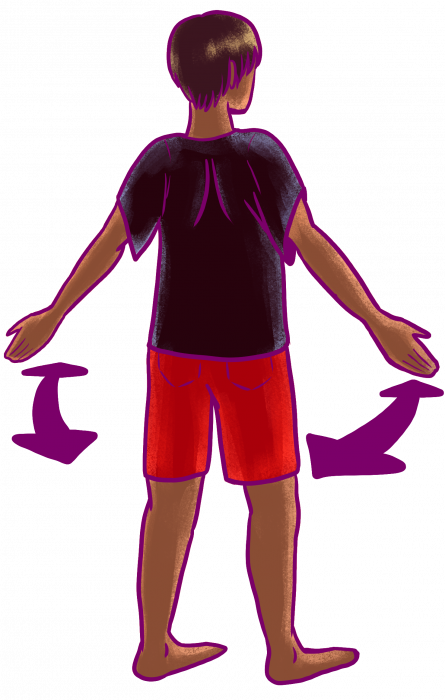What position are you in right now? Studying from home I find myself twisting into the strangest positions during the day. After sitting for hours on end my shoulders tend to go stiff. It would be easier to concentrate if I were sitting in a comfortable position and could just relax during lectures and exercise sessions. That is why I interviewed physiotherapist Heli Virkkunen in order to discover the secrets of ergonomics.

Ergonomics isn’t just about sitting in a good position while working but also about changing positions, staying active and taking breaks. Staying still isn’t good for you, and especially now during distance learning we can easily forget to move our bodies when we don’t have to walk from one lecture hall to another. How can one avoid getting tense shoulders at the end of the day? We made a list of tips based on the interview, that will help studying go by smoother. (at least physically)
Top 5 tips to better ergonomics
- Changing positions – staying still isn’t good for you
- Resting your arms on a surface so that your shoulders are relaxed
- Move away from the desk once in a while and go to for example an armchair, a bed or stand. Changing your surroundings is also beneficial for learning!
- Support your back with a pillow and keep your spine straight. Don’t push the neck forward!
- Cushion your chair so that it won’t dig into the backs of your thighs. This way the blood flow to your legs isn’t constricted.
Variation for working positions
Spending the whole day sitting at a table staring at a screen isn’t good for you. You can listen to lectures while walking, laying in bed or resting in an armchair. It pays off to change locations!

To balance out sitting, sometimes it’s nice to work while standing. Rest your arms on a surface, keep your legs spread a little apart and keep your knees loose. Stand on something nice and comfy, like a yoga mat.

While laying on a sofa, put a pillow on your lap underneath your laptop so you can keep your arms comfortable. Raise your head and bend your knees. You can also put a pillow under your knees if you feel like it.
Breaks are important!
Every half an hour you should take a break, maybe a one minute exercise. Stand up, bend your back backwards and roll your shoulders. Other good stretches to get your blood flowing are:


When we return to campus
What should one do in lecture halls, where you can’t adjust the furniture, in order to sit more comfortably?
- Lean forwards, support with your hands on the table
- Lean backwards, cushion your seat with outerwear; put your hat on your lower back
- Change positions
- Choose a corner seat and stand up every once in a while
- Change positions!!
Ideas for props
Since we’re all studying from home so much, should one actually invest in better ergonomics?
There are multiple different props available, also for smaller budgets. Here’s a couple that might spark some joy.
- electric table
- a laptop stand
- an activity bracelet that reminds you to move
- an exercise ball, use this instead of a chair
- an inflatable ring cushion for more active sitting

